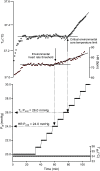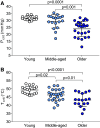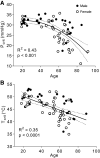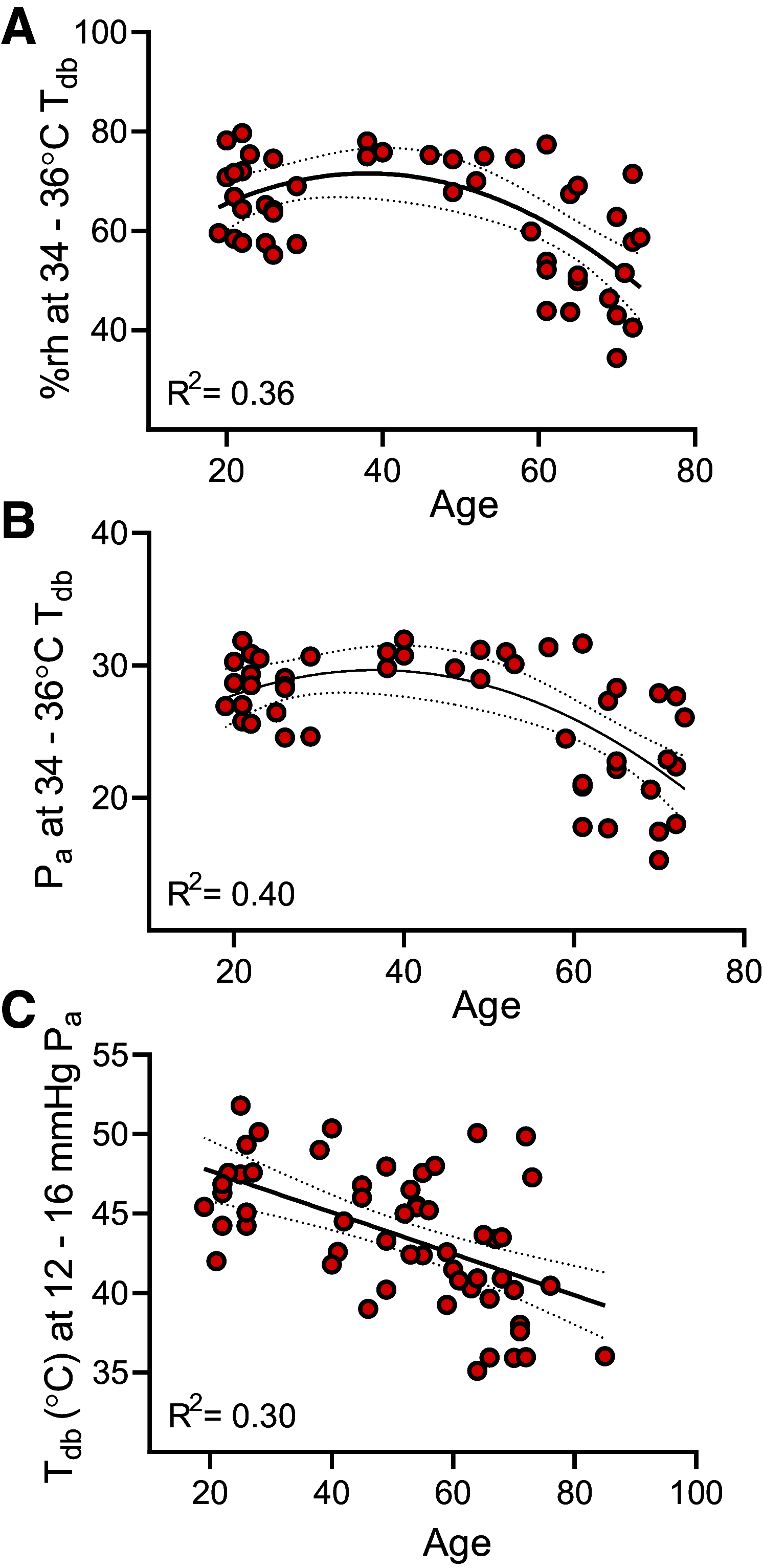Critical environmental core temperature limits and heart rate thresholds across the adult age span (PSU HEAT Project)
- PMID: 38813613
- PMCID: PMC11389895
- DOI: 10.1152/japplphysiol.00117.2024
Critical environmental core temperature limits and heart rate thresholds across the adult age span (PSU HEAT Project)
Abstract
The frequency, duration, and severity of extreme heat events have increased and are projected to continue to increase throughout the next century. As a result, there is an increased risk of excessive heat- and cardiovascular-related morbidity and mortality during these extreme heat events. Therefore, the purposes of this investigation were to establish 1) critical environmental core temperature (Tc) limits for middle-aged adults (MA), 2) environmental thresholds that cause heart rate (HR) to progressively rise in MA and older (O) adults, and 3) examine critical environmental Tc limits and HR environmental thresholds across the adult age span. Thirty-three young (Y) (15 F; 23 ± 3 yr), 28 MA (17 F; 51 ± 6 yr), and 31 O (16 F; 70 ± 3 yr) subjects were exposed to progressive heat stress in an environmental chamber in a warm-humid (WH, 34-36°C, 50-90% rh) and a hot-dry (HD, 38°C-52°C, <30% rh) environment while exercising at a low metabolic rate reflecting activities of daily living (∼1.8 METs). In both environments, there was a main effect of age on the critical environmental Tc limit and environmental HR thresholds (main effect of age all P < 0.001). Across the lifespan, critical environmental Tc and HR thresholds decline linearly with age in HD environments (R2 ≥ 0.3) and curvilinearly in WH environments (R2 ≥ 0.4). These data support an age-associated shift in critical environmental Tc limits and HR thresholds toward lower environmental conditions and can be used to develop evidence-based safety guidelines to minimize future heat-related morbidity and mortality across the adult age span.NEW & NOTEWORTHY This study is the first to identify critical environmental core temperature and heart rate thresholds across the adult age spectrum. In addition, our data demonstrate that the rate of decline in Tc and HR limits with age is environmental-dependent. These findings provide strong empirical data for the development of safety guidelines and policy decisions to mitigate excessive heat- and cardiovascular-related morbidity and mortality for impending heat events.
Keywords: aging; cardiovascular responses; climate change; heat balance; heat wave.
Conflict of interest statement
W. L.K. is an associate editor of
Figures






References
-
- Fischer E, Sippel S, Knutti R. Increasing probability of record-shattering climate extremes. Nat Clim Chang 11: 689–695, 2021. doi: 10.1038/s41558-021-01092-9. - DOI
-
- Ballester J, Quijal-Zamorano M, Méndez Turrubiates RF, Pegenaute F, Herrmann FR, Robine JM, Basagaña X, Tonne C, Antó JM, Achebak H. Heat-related mortality in Europe during the summer of 2022. Nat Med 29: 1857–1866, 2023. [Erratum in Nat Med 30: 603, 2024]. doi: 10.1038/s41591-023-02419-z. - DOI - PMC - PubMed
MeSH terms
Grants and funding
LinkOut - more resources
Full Text Sources
Research Materials

